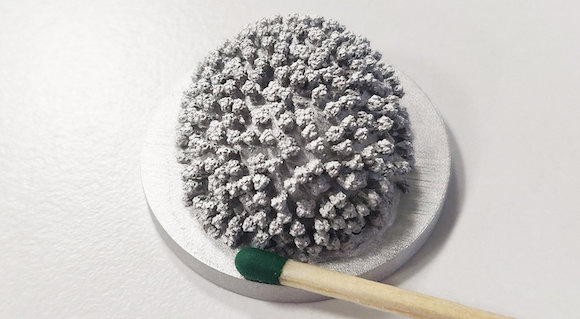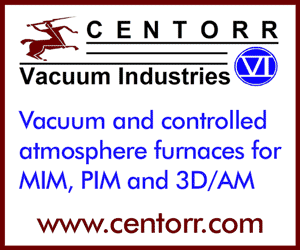MetShape additively manufactures virus model for flu research
February 1, 2022

MetShape GmbH, headquartered in Pforzheim, Germany, has additively manufactured a high-precision virus model using a Vat Photopolymerisation (VPP) process which the company refers to as Lithography-based Metal Manufacturing (LMM). This is in support of the research work of CIC nanoGUNE, the Basque Nanoscience Cooperative Research Center, on the spread of viruses and their transmission mechanisms.
Viruses are ubiquitous, particularly in winter when people are more susceptible due to the high virus load, largely from ‘aerosols’ (virus-laden solid or solid/liquid particles that travel in the air). A precise understanding of virus aerosols is essential in order to identify the transmission mechanisms of viruses, such as SARS-CoV-2 or influenza, and to develop solutions for prevention. The physics and chemistry of virus aerosols are investigated at CIC nanoGUNE. Research requires virus models that are as detailed, small and precise as possible. NanoGUNE works with nanoscale molecular aggregates, but increasingly uses water/virus models on the centimetre scale to complement wetting and dewetting studies on the nanoscale.
One model of an influenza virus has a diameter of approximately 120 nm. Its surface consists of up to 500 ‘spikes’, which – unlike on CoV – are only about 10 nm apart, such that tiny capillaries are located between the spikes. Liquid aerosols lose water very quickly in air; they quasi dry up. On the one hand, this can deactivate the viruses, but on the other hand, the loss of mass means a longer residence time in the air. This fine balance determines the transmission. Do the capillaries play any role?
For the centimetre-sized model, the capillaries must be less than 1 mm in size, otherwise gravity will lead to false outcomes. Such precision cannot be achieved for microparts with conventional Additive Manufacturing processes, such as Binder Jetting (BJT) and Laser Beam Powder Bed Fusion (PBF-LB). With this problem, nanoGUNE contacted AM service provider MetShape.
MetShape specialises in complex problems and metallic micro-precision parts, enabling it to support this project by additively manufacturing a high-precision virus model on the scale 250000:1. This means the model has a diameter of approximately 30 mm. The company was then able to debind and sinter the model, and provide a finished model to nanoGUNE. No post-processing steps for the virus model were required, as MetShape’s technology achieved the required surface quality without the need for support structures.

Compared to a standard polymer model, the metal model performs significantly better due to the lower mass of the water, based on the smaller size of the model. Both models were hydrophilised with an adhesive spray. In the case of the polymer model, however, the resulting large water mass causes droplet artefacts, while the metal model is correctly wetted.
“Thanks to the model printed by MetShape, we can now carry out our experiments on the wetting and dewetting of water on viruses and thus achieve a new milestone in the research of virus aerosols,” stated Professor Alexander Bittner. “With the new possibilities through innovative manufacturing technologies, we are taking a big step closer to our long-term goal of protecting as many people as possible from virus infections.”

















